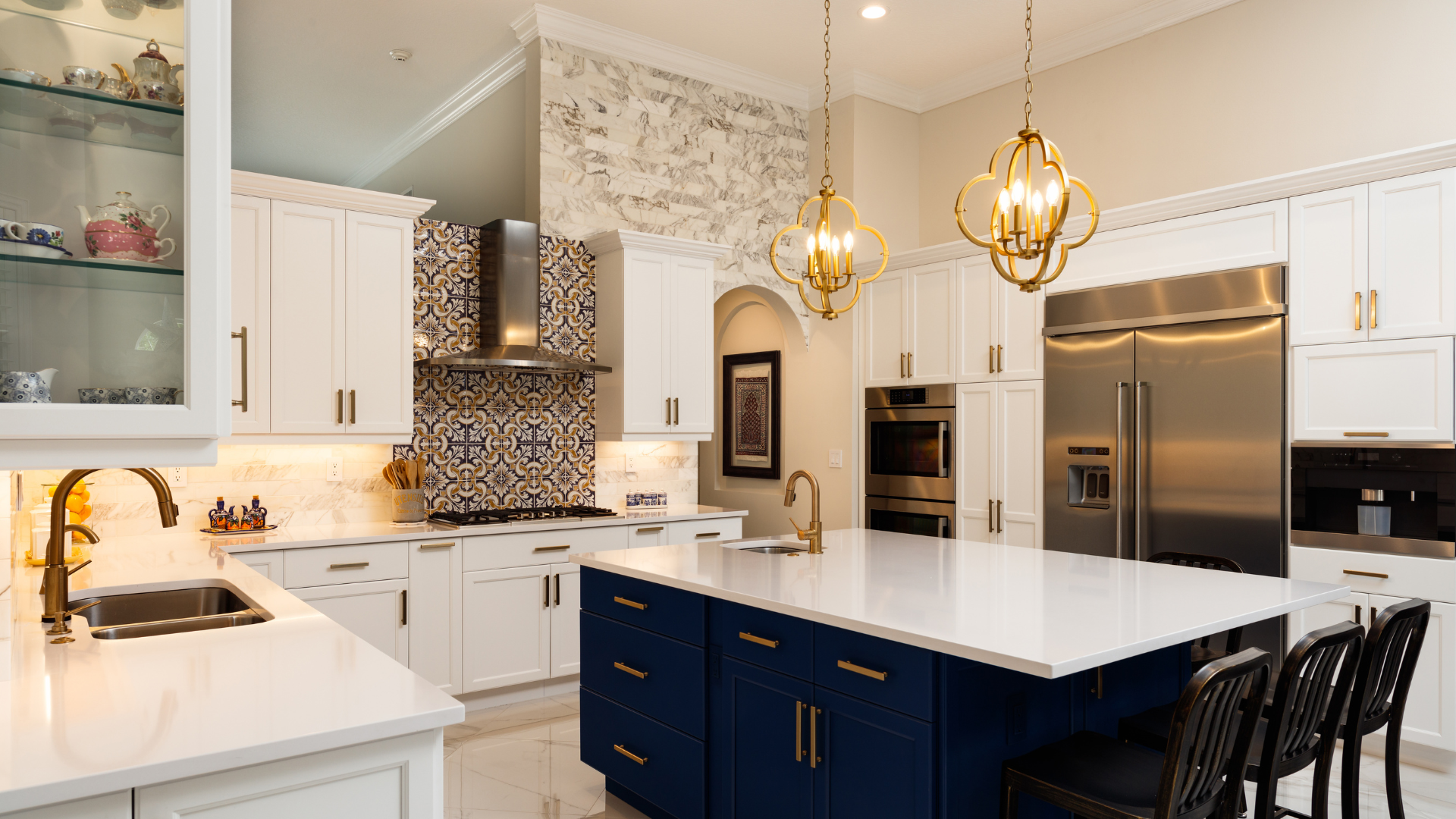Cooking Christmas dinner can be a delightful yet daunting task. The key to success lies in planning and preparation. Creating a menu that includes traditional dishes, along with a few personal favorites, sets the foundation for a memorable feast.
Selecting quality ingredients is essential, as they enhance the flavors of classic recipes like roast turkey, stuffing, and seasonal vegetables. With the right tools and methods, anyone can elevate their cooking skills to impress family and friends. Understanding cooking techniques and timing ensures that each dish is served at its best.
Whether someone is a seasoned chef or a novice in the kitchen, tackling Christmas dinner can bring joy and satisfaction. Preparing a festive meal is not just about the food; it’s about creating lasting memories around the table with loved ones. With careful attention to detail, anyone can make their Christmas dinner a resounding success.
Planning Your Christmas Dinner
Effective planning sets the foundation for a successful Christmas dinner. Key factors to consider include budgeting, guest lists, timing, and thematic choices.
Budgeting for the Feast
Setting a budget is crucial before diving into the details of Christmas dinner. This helps in managing expectations and preventing overspending.
- Itemize Expenses: Create a list of potential expenses, including food, beverages, decorations, and any rentals.
- Prioritize Needs vs. Wants: Identify must-have items versus optional extras to keep spending in check.
For example:
- Food and Beverages: 50%
- Decorations: 20%
- Rentals/Extras: 30%
- Track Costs: As purchases are made, document them against the budget to adjust where necessary. This approach ensures a memorable dinner without financial strain.
Creating a Guest List
Determining the guest list is essential for planning the dinner. Consider space, food quantity, and the desired atmosphere when deciding who to invite.
- Capacity Check: Assess how many people can comfortably fit in the dining area.
- The mix of Guests: Aim for a balance—friends, family, and individuals from various backgrounds can enhance the experience.
A sample list might include:
- Family members: immediate family
- Friends: close friends
- Others: neighbors or work colleagues
- Send Invitations Early: Aim to send out invites at least a month in advance to secure attendance and allow guests to plan.
Selecting the Date and Time
Choosing the right date and time is vital for accommodating everyone’s schedules. Most families prefer gathering on Christmas Eve or Christmas Day itself.
- Survey Guests: Check availability through casual conversations or group chats to see which dates work best.
- Dinner Timing: Decide on a meal time that suits most guests, such as late afternoon or early evening.
Including an example schedule can help:
- Christmas Eve: 6:00 PM
- Christmas Day: 3:00 PM
- Plan for Duration: Consider how long to allocate for the dinner and festivities. Planning for several hours allows for relaxation and socializing.
Choosing a Theme or Style
Selecting a theme gives Christmas dinner a unique touch, enhancing the overall experience. Themes provide a cohesive aesthetic for food, decor, and attire.
- Traditional Themes: Classic styles often include elements like red and green decor, gingerbread, and holiday lights.
- Modern Interpretations: Incorporate contemporary styles or cultural influences, such as rustic or minimalist designs.
Examples of potential themes:
- Winter Wonderland: Whites, blues, and silver accents
- Vintage Christmas: Retro decorations and nostalgic foods
- Menu Coordination: Ensure that the menu aligns with the chosen theme. For instance, a rustic theme might include hearty, farm-inspired dishes.
Crafting the Menu
Creating a Christmas dinner menu involves careful thought to accommodate guests’ preferences and dietary needs. The right balance of flavors, textures, and traditions can elevate this festive gathering.
Considering Dietary Restrictions
Before planning the menu, it’s essential to address dietary restrictions. Common considerations include vegetarian, vegan, gluten-free, and nut-free options.
- Communicate with Guests: Reach out to attendees in advance to learn about their specific needs.
- Research Alternatives: For instance, replace traditional sides with gluten-free grains or dairy substitutes.
This ensures all guests feel included and enjoy the meal without health concerns. A diverse menu allows for creative adaptations, ensuring everyone has a delicious holiday experience.
Selecting a Main Course
The main course typically takes center stage during Christmas dinner. Classic options include roast turkey, glazed ham, or prime rib.
- Consider Cooking Time: Choose a dish that fits the desired cooking schedule. A turkey may take longer than a tenderloin.
- Flavor Profiles: Incorporate herbs like rosemary or thyme for aroma.
Adding a standout main dish sets the tone for the meal, providing comfort and satisfaction. Consider marinating or brining in advance for added flavor and moisture.
Picking Side Dishes
Side dishes complement the main course and should incorporate a variety of flavors and textures. Popular choices include:
- Roasted Vegetables: Seasonal options such as Brussels sprouts, carrots, and sweet potatoes.
- Classic Gravy: Essential for pairing with turkey or mashed potatoes.
Including a mix of starches, vegetables, and salads introduces balance. Ensure there are at least one or two crowd-pleasers to appeal to diverse tastes.
Adding Appetizers and Starters
Start the meal with appetizers that whet the appetite without overshadowing the main course.
- Simple Cheese Platters: Include a variety of cheeses, cured meats, and crackers.
- Seasonal Dips: Consider options like spinach artichoke or butternut squash.
These light bites keep guests engaged while waiting for the main event. Aim for a combination of flavors and textures to maintain interest throughout the evening.
Planning Desserts
Desserts are the sweet finale of the meal and should be memorable. Traditional choices often include:
- Pumpkin or Pecan Pie: Seasonal favorites that evoke nostalgia.
- Chocolate Yule Log: A more contemporary yet festive option.
Offering a selection caters to different preferences. Consider including a fruit-based dessert to provide a refreshing contrast to richer options. A well-planned dessert rounds off the gathering beautifully, leaving lasting impressions.
Shopping and Ingredients
Selecting the right ingredients is essential for a successful Christmas dinner. Paying attention to where ingredients come from, and their freshness, and crafting an organized shopping list helps streamline the cooking process.
Sourcing Quality Ingredients
To achieve the best possible flavor, sourcing high-quality ingredients is crucial. This includes purchasing a well-raised turkey or ham, as the quality of meat can significantly impact the dish.
Options for sourcing:
- Local farms or butcher shops are ideal for fresh, sustainable options.
- Farmers’ markets often have seasonal produce and artisanal goods.
Additionally, consider choosing organic or grass-fed products when possible. Not only do they often taste better, but they also align with a health-conscious lifestyle.
Freshness and Seasonality
Fresh ingredients enhance the flavor of Christmas dinner. The seasonality of produce determines which items are likely to be at their peak flavor.
Key seasonal ingredients:
- Root vegetables like carrots and potatoes are widely available.
- Brussels sprouts, cranberries, and winter squash also shine during this time.
Checking local guides can help determine what is in season. Always aim to select items that look vibrant and unblemished. Fresh herbs such as rosemary, thyme, and parsley add aromatic depth and brightness to dishes.
Organizing Your Shopping List
An organized shopping list is vital for efficiency. Begin by outlining the menu and identifying the required ingredients.
Creating the list can follow these steps:
- List out the dishes.
- Write down all ingredients by category (e.g., meats, vegetables, herbs).
- Include quantities needed to avoid multiple trips.
Consider formatting the list by store sections. This saves time and ensures that no essential ingredients are overlooked. Keeping a list on a mobile device can be useful for easy updates while shopping.
Preparing the Kitchen
A well-prepared kitchen sets the stage for a successful Christmas dinner. This involves cleaning and organizing the space, gathering essential tools and equipment, and establishing a clear timeline for cooking.
Cleaning and Organizing Space
Start by clearing the countertops. Remove any clutter and wipe down surfaces with a disinfectant. This creates a clean area for food preparation. Next, organize pantry items and ingredients. Group similar items together and check for any expired goods. It’s essential to have easy access to ingredients while cooking.
Additionally, ensure that the floor is clean and free of any hazards. A tidy kitchen not only feels inviting but also promotes safety during meal preparation.
Essential Tools and Equipment
Gathering the right tools is crucial for efficiency. Core items include:
- Chef’s knife: Multi-purpose for cutting and chopping.
- Cutting boards: Have at least two, one for meats and another for vegetables.
- Pots and pans: Ensure a variety of sizes to accommodate different dishes.
Also, consider specialty tools like roasting pans and meat thermometers for turkey. Mixing bowls and measuring cups is vital for precise ingredient portions. Make sure all equipment is clean and functioning. Check that knives are sharp and pans are free from scratches or wear.
Setting up a Cooking Timeline
A cooking timeline helps to manage tasks efficiently. Start by determining the cooking order of each dish. For example, the turkey may require a longer cooking time compared to side dishes.
Create a schedule that includes preparation and cooking times. This could look like:
- Turkey: Season and roast, approximately 4 hours.
- Stuffing: Prepare while the turkey is roasting.
- Vegetables: Steam or roast last for freshness.
Consider staggering tasks to utilize time effectively. For example, while the turkey cooks, prepare desserts or side dishes. This coordinated approach helps ensure everything is ready at the right moment.
Executing the Recipes
Successfully executing Christmas dinner recipes involves understanding key cooking techniques, managing cooking times effectively, and addressing food safety considerations. Each element is crucial to ensure a delightful dining experience.
Cooking Techniques and Tips
Different cooking methods can enhance the flavors of holiday dishes. Roasting is popular for meats, as it creates a crispy exterior while keeping the inside moist. Brining a turkey before roasting can make it juicier. A simple brine can be made by dissolving salt and sugar in water and soaking the turkey for several hours.
Baking is essential for side dishes and desserts. Preheat the oven and use timers to ensure items cook evenly. Stir-frying vegetables can retain their color and crunch, providing a vibrant addition to the meal. Sautéing with garlic or herbs can infuse deeper flavors.
Managing Cooking Times
Timing is critical for a successful Christmas dinner. The turkey usually takes the longest; a general rule is 13 minutes per pound at 350°F. Side dishes should be organized to finish cooking around the same time as the main dish.
Creating a timeline is helpful. It may look like this:
| Time | Task |
| 10:00 AM | Start bringing turkey |
| 1:00 PM | Preheat oven |
| 2:00 PM | Roast turkey |
| 3:30 PM | Prepare side dishes |
By staggering cooking processes, everything will be ready to serve simultaneously.
Food Safety Considerations
Food safety is paramount during holiday cooking. Always wash your hands before starting. Avoid cross-contamination by using separate cutting boards for meat and vegetables. Cook meats to the proper internal temperatures: turkey should reach 165°F, while ham can be safely served at 140°F if precooked. Cooling leftovers quickly is also essential. Store them in shallow containers and refrigerate within two hours of serving. Following these practices ensures a safe and enjoyable festive meal.
Setting the Table
Creating a warm and inviting atmosphere for Christmas dinner involves careful consideration of seating arrangements and decorative elements. A well-set table enhances the dining experience and adds to the festive spirit.
Arranging Seating and Place Settings
Begin by determining how many guests will attend. This helps in deciding the seating arrangement. A round table fosters conversation, while a rectangular one can accommodate more guests.
Each place setting should include:
- Plate: Centered with a charger or dinner plate.
- Cutlery: Forks on the left, knives and spoons on the right.
- Glassware: Water glass above the knife; wine glasses to the right.
- Napkins: Folded elegantly and placed either on the plate or beside it.
Consider placing name cards for a personal touch. This guides guests to their designated seats and encourages mingling.
Decorating the Dining Area
A well-decorated dining area enhances the festive mood. Choose a color scheme that complements the holiday theme, such as red, green, gold, or silver.
Key elements to consider include:
- Tablecloth: Use a festive or elegant tablecloth as a base.
- Centerpiece: Create an attractive centerpiece using seasonal flowers, candles, or ornaments.
- Lighting: Soft, warm lighting creates an inviting atmosphere. Consider using fairy lights or candles.
Accent the décor with seasonal touches like pinecones or holly. Ensure that decorations do not obstruct the view across the table for comfortable conversation.
Serving the Dinner
Serving Christmas dinner involves careful consideration of both presentation and the order in which courses are served. Attention to these details can enhance the dining experience for guests.
Presentation of Dishes
Presenting dishes thoughtfully can elevate the whole dining experience. Use clean, attractive serving platters to highlight the food. For instance, a roast turkey could be placed on a large, decorative platter with fresh herbs or citrus fruits arranged around it for added color.
Garnishes play a crucial role as well. Sprigs of parsley or rosemary can enhance the dish’s visual appeal. It is important to arrange food in a way that creates an inviting look, keeping in mind color contrast and height variation.
Consider using different serving styles, such as family-style or plated servings. Family style allows guests to serve themselves, fostering a communal atmosphere. Alternatively, plated servings can create a formal dining experience, ensuring each guest receives an equal portion.
Order of Serving Courses
The order of serving courses can impact the flow of dinner. Start with appetizers that stimulate the appetite, such as shrimp cocktails or a charcuterie board. These can be served while guests mingle, setting a festive tone.
Following appetizers, serve a soup or salad. A light soup, like a creamy pumpkin soup, can prepare the palate for heavier dishes. Salads can offer a refreshing contrast, particularly with seasonal ingredients. The main course comes next, often featuring a star dish like a roasted turkey or glazed ham. Accompany it with side dishes such as mashed potatoes, stuffing, and seasonal vegetables.
Finish with desserts that complement the meal’s richness. Classic options include pumpkin pie or yule log. This structured approach will ensure guests enjoy each course fully, contributing to an enjoyable Christmas celebration.
Handling Leftovers
Managing Christmas dinner leftovers is essential for minimizing food waste and providing enjoyable meals in the days following the holiday. Proper storage and creative recipe ideas can help keep meals fresh and interesting.
Storing Excess Food
Leftovers should be stored promptly to maintain freshness and prevent spoilage. Start by dividing food into smaller portions for quicker cooling and easier reheating. Use airtight containers to preserve flavor and texture.
Label containers with the contents and date to track freshness. Most leftovers can be safely stored in the refrigerator for 3 to 4 days. For longer storage, consider freezing. Foods like turkey, stuffing, and gravy freeze well and maintain quality for up to six months.
When reheating, ensure food reaches an internal temperature of 165°F (74°C) to eliminate any harmful bacteria.
Creative Ideas for Leftover Dishes
Transforming leftovers into new dishes can keep meals exciting. Consider these ideas:
- Turkey Soup: Use leftover turkey and broth to create a hearty soup. Add vegetables like carrots, celery, and onions for flavor.
- Stuffing Waffles: Mix stuffing with eggs and cook in a waffle maker for a unique breakfast option.
- Mashed Potato Cakes: Combine leftover mashed potatoes with cheese and herbs, form into patties, and pan-fry until golden.
- Cranberry Sauce Smoothies: Blend leftover cranberry sauce with yogurt and a banana for a refreshing smoothie.
These creative recipes not only reduce waste but also provide quick and delicious meals.
Cleaning Up Post Dinner
After the festive meal, cleaning up efficiently can minimize stress and restore order to the kitchen. Proper strategies for dishwashing and waste management play crucial roles in this process.
Efficient Dishwashing Strategies
To tackle the dishes effectively, start by soaking pots and pans immediately after use. This helps loosen stuck-on food. Organize the workspace by grouping similar items, such as plates, cutlery, and glasses. Using a three-compartment sink or a dishpan can streamline washing, rinsing, and drying. Begin by washing the least dirty items first, progressing to the dirtiest. For those without a dishwasher, consider using a dish brush and a quality dish soap for best results. For a more sustainable approach, use eco-friendly cleaning products. Avoid single-use sponges, opting for reusable options instead. It’s also helpful to wear gloves to protect your hands from hot water and harsh chemicals.
Waste Management and Recycling
Proper waste management after Christmas dinner is essential to reduce environmental impact. Start by sorting waste into designated bins: compost, recycling, and trash. Compost leftover food scraps, as they enrich soil. Items like vegetable peels, eggshells, and coffee grounds are excellent candidates.
For recyclable materials, rinse off containers and remove labels if necessary. Common recyclable items include glass jars, metal cans, and cardboard boxes. For trash, avoid disposing of non-recyclable materials like styrofoam or mixed plastics in regular bins. Check local guidelines for specific waste disposal instructions to ensure compliance. Plan these tasks ahead of time to streamline the cleaning process.



